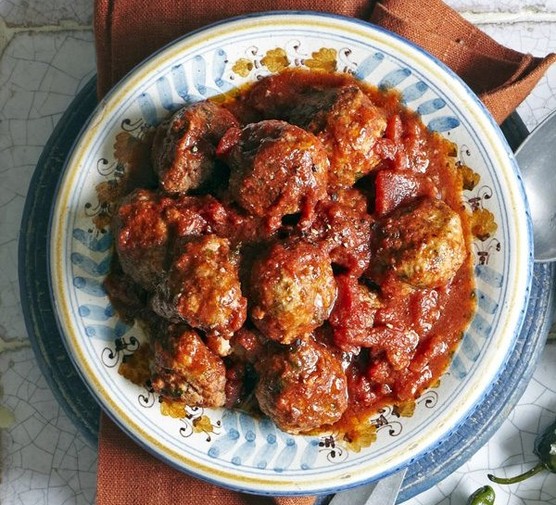Tapas: A Gastronomic Journey through Spanish Culture and Flavor

Introduction:
Nestled among the vibrant streets of Spain, there exists a culinary tradition that embodies the spirit of conviviality, community, and celebration. Tapas, an assortment of small dishes bursting with flavor and creativity, has long been a symbol of Spanish cuisine and hospitality. But beyond its delectable taste lies a captivating history and a meticulously crafted recipe that reflects the diversity and richness of Spanish culinary heritage. Join us as we embark on a journey to uncover the origins, traditions, and techniques behind this iconic culinary tradition.
Origins of Tapas:
The origins of tapas are as diverse and varied as the dishes themselves, with several theories surrounding its inception. One popular legend traces the origins of tapas to the southern region of Andalusia, where it is said that bartenders would cover glasses of wine with slices of bread or cheese to prevent flies from contaminating the drink. The word “tapas” is derived from the Spanish verb “tapar,” which means “to cover,” reflecting this practice of covering drinks with small plates or “tapas.”
Another theory suggests that tapas originated in the bustling taverns and inns of medieval Spain, where travelers and merchants would stop for refreshments and small bites to eat. In order to accommodate their guests, innkeepers would serve small portions of food along with their drinks, allowing patrons to sample a variety of flavors and textures while socializing with friends and fellow travelers.
Over time, tapas evolved from a simple snack to a culinary tradition that is celebrated throughout Spain and beyond. Today, tapas holds a special place in Spanish culture, serving as a symbol of hospitality, camaraderie, and culinary creativity.
Ingredients and Preparation:
While there are countless variations of tapas, the essence of tapas lies in its simplicity and versatility. Tapas can be made with a wide range of ingredients, including meats, seafood, vegetables, and cheeses, and can be served hot or cold, fried or grilled, savory or sweet. Some popular tapas ingredients and preparations include:
- Jamón Ibérico: A type of cured ham made from Iberian pigs, jamón Ibérico is a staple of Spanish cuisine and is often served thinly sliced alongside crusty bread or as part of a charcuterie board.
- Patatas Bravas: Crispy fried potatoes served with a spicy tomato sauce and creamy aioli, patatas bravas is a classic tapas dish that is beloved by locals and visitors alike.
- Gambas al Ajillo: Succulent shrimp sautéed in garlic-infused olive oil and served with crusty bread, gambas al ajillo is a simple yet flavorful tapas dish that highlights the freshness and quality of Spanish seafood.
- Tortilla Española: A hearty omelette made with eggs, potatoes, and onions, tortilla española is a quintessential tapas dish that is enjoyed throughout Spain.
- Pimientos de Padrón: Small green peppers fried until blistered and served with sea salt, pimientos de padrón is a popular tapas dish that is known for its mild flavor and addictive crunch.
Cultural Significance:
Tapas holds a special place in Spanish culture, serving as a symbol of conviviality, community, and celebration. It is often enjoyed at social gatherings, family meals, and festive occasions, where friends and loved ones gather to share small plates of food and raise a glass in toast to good health and happiness.
In addition to its cultural significance in Spain, tapas has also gained popularity around the world, with Spanish restaurants and bars serving up their own unique interpretations of the classic dishes. It has even become a popular option for dinner parties and casual entertaining, providing a fun and interactive dining experience that encourages guests to sample a variety of flavors and textures.
Tips and Variations:
While traditional tapas dishes are made with classic ingredients such as jamón Ibérico, patatas bravas, and gambas al ajillo, there are endless variations of tapas that incorporate different flavors, ingredients, and cooking techniques. Some popular tapas variations include:
- Pinchos: Small skewers of grilled meats, seafood, or vegetables served on slices of bread, pinchos are a popular variation of tapas that originated in the Basque Country and are often enjoyed as a light meal or snack.
- Croquetas: Deep-fried croquettes made with a creamy béchamel sauce and a variety of fillings such as ham, cheese, or seafood, croquetas are a popular tapas dish that is perfect for sharing with friends and family.
- Montaditos: Small sandwiches made with crusty bread and a variety of fillings such as cured meats, cheeses, and vegetables, montaditos are a popular tapas dish that is enjoyed throughout Spain.
Conclusion:
In conclusion, tapas is much more than just a culinary tradition—it’s a celebration of Spanish culture, creativity, and conviviality. From its humble origins as a simple snack to its status as a beloved symbol of hospitality and camaraderie, tapas continues to captivate and delight food lovers around the world.
So whether you’re savoring it in a bustling tapas bar in Barcelona or trying it for the first time in your own kitchen, one thing is for certain: tapas is a timeless classic that never fails to impress. So why not indulge in a taste of Spain’s culinary heritage and experience the magic of tapas for yourself? ¡Buen provecho!




